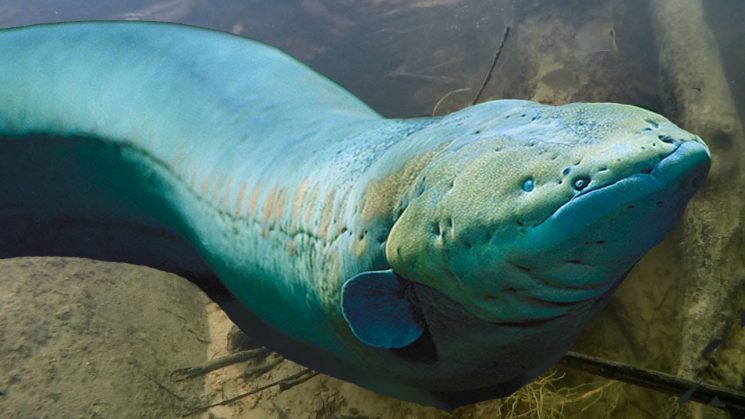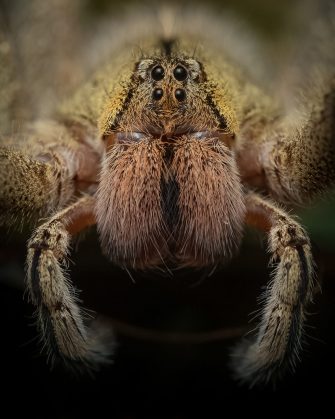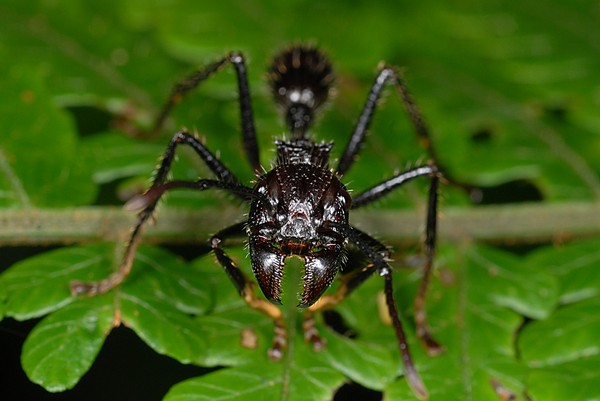The Amazon rainforest is a vast and mesmerizing ecosystem teeming with diverse wildlife, including some of the most dangerous animals on the planet. From powerful predators to venomous creatures, the Amazon rainforest is home to a variety of species that command respect and caution. In this article, we will explore the top 10 most dangerous animals that inhabit this rich and biodiverse environment. The Amazon rainforest is a hotspot for venomous snakes, spiders, and other dangerous creatures, presenting risks to both humans and animals. The region harbors a variety of infectious diseases, including malaria, dengue fever, and Zika virus, transmitted by mosquitoes and other vectors. From ferocious predators like the jaguar and black caiman to venomous creatures like the bushmaster snake and bullet ant, these animals showcase the raw power and unique adaptations that allow them to thrive in the challenging rainforest environment. Here is the list of 10 dangerous animals in The Amazon Rainforest.
1. Green Anaconda
The green anaconda is a large snake species that inhabits the Amazon rainforest, reaching lengths of up to 20 feet and 90 kg. Green anacondas are non-venomous snakes that rely on constriction to capture and subdue their prey. They coil their muscular bodies around their victims and squeeze, leading to suffocation and death. Green anacondas are excellent swimmers and are well-adapted to their semi-aquatic habitat. Green anacondas feed on a variety of prey, including fish, birds, mammals, and even other reptiles. While they primarily target smaller animals, there have been rare instances of them preying on larger mammals, including deer and caimans. They are non-aggressive unless provoked or threatened, and their first instinct is usually to retreat or hide rather than attack.

2. Jaguar
The jaguar is a powerful predator found in the Amazon rainforest. Jaguars are the largest big cat species in the Americas and hold the status of an apex predator in their ecosystem, with a reputation for strength, agility, and stealth. Jaguars have an incredibly powerful bite, capable of crushing the skulls and breaking the bones of their prey, which includes a wide range of animals such as capybaras, caimans, and even larger mammals. Jaguars are excellent swimmers and climbers, allowing them to traverse the diverse terrain of the Amazon rainforest and effectively hunt both on land and in water. Jaguars are skilled at stalking and ambushing their prey, often relying on their exceptional camouflage and patience to get close before launching a surprise attack. Encountering a jaguar in the wild is a rare and remarkable experience, and respecting their natural habitat and observing them from a safe distance is crucial.
 3. Pit Vipers
3. Pit Vipers
Bushmaster is the longest viper in the world. Pit vipers possess venomous fangs that inject potent toxins into their prey, which can also pose a danger to humans if bitten. The venom of pit vipers is primarily hemotoxic, meaning it affects the blood and tissues, causing damage, pain, and potential systemic effects. Antivenom is available for treating pit viper bites. Pit vipers inhabit a variety of ecosystems within the Amazon rainforest, including dense vegetation, forest floors, and near water sources. While pit vipers in the Amazon rainforest can be dangerous, bites are relatively rare, and most encounters occur when humans unintentionally provoke or disturb the snakes. Pit vipers play a role in the ecosystem as predators, controlling populations of rodents and other small animals. Their presence contributes to the biodiversity and ecological balance of the Amazon rainforest.

4. Vampire Bat
Vampire bats have a unique feeding habit of consuming the blood of other animals, typically livestock or wildlife. Vampire bats are highly social animals and live in colonies. They make small incisions with their razor-sharp teeth and lap up the blood that oozes out. Vampire bats have specialized heat-sensing organs on their noses, enabling them to locate blood vessels close to the skin’s surface with precision, facilitating their feeding process. Vampire bats are the primary carriers of rabies in the Amazon rainforest, posing a risk of transmitting the disease through their bites. Vampire bats are primarily active during the night, taking advantage of the darkness to approach their prey unnoticed. The saliva of vampire bats contains an anticoagulant that prevents blood from clotting and an anesthetic that numbs the bite area, allowing the bat to feed without detection or interruption.

5. Poison Dart Frog
The poison dart frog is brightly colored, possessing toxic skin secretions that serve as a potent defense mechanism. The frog contains alkaloid toxins that can be lethal to predators and pose a potential danger to humans. The alkaloid toxins found in poison dart frogs can disrupt nerve function, leading to muscle paralysis, respiratory distress, and, in extreme cases, cardiac arrest. Indigenous tribes of the Amazon rainforest historically used poison dart frogs’ secretions to coat the tips of blowgun darts for hunting. The application of these toxins to weapons highlights their potency. Poison dart frogs raised in captivity do not possess their characteristic toxins.

6. Electric Eel
The electric eels are found in the lower basin of the Amazon rainforest. The electric eel is a fascinating aquatic creature known for its ability to generate powerful electric shocks. Electric eels possess specialized organs called electrolytes that can produce electrical discharges. These shocks are primarily used for hunting, self-defense, and communication. Electric eels can generate electric shocks of up to 600 volts. The electric eel’s electric shocks are most effective in water, where conductivity is high. This means that individuals who come into contact with electric eels while submerged or in wet environments are at a greater risk of experiencing the full force of their electrical discharge.

7. Wandering Spider
The wandering spider is considered one of the most dangerous spiders in the world. Wandering spiders possess venom that is highly potent and neurotoxic, containing a mix of compounds. The venom of wandering spiders can affect the nervous system, potentially leading to symptoms such as muscle spasms, paralysis, breathing difficulties, and in rare cases, even death. They prefer warm and humid environments. Wandering spiders are primarily nocturnal, increasing the risk of accidental encounters, especially in low-light conditions or when they enter human dwellings. The Brazilian wandering spider, in particular, gained notoriety for its venomous bite and aggressive behavior, often making headlines due to its potential danger to humans.

8. Piranhas
Piranhas are often portrayed as dangerous and aggressive freshwater fishes. Piranhas have powerful jaws and razor-sharp teeth, which they use to tear through flesh. They can exhibit aggressive feeding behavior when presented with the opportunity, to attack and consume prey in groups. Piranhas’ dangerous reputation has been exaggerated and perpetuated by movies, television shows, and sensationalized media depictions, often portraying them as bloodthirsty killers. Piranhas are known to defend themselves vigorously if they feel threatened or cornered. They may bite aggressively in self-defense, especially if their natural habitat is disturbed. piranhas play a crucial role in their ecosystems by controlling fish populations, removing sick or injured individuals, and contributing to nutrient recycling.

9. Bullet Ant
The bullet ant is primarily found in the lowland rainforest of Nicaragua Bolivia and Paraguay. It inhabits the forest floor and can be encountered in various regions within the Amazon basin. The sting of a bullet ant is famously known for being incredibly painful, often described as feeling like being shot, hence its name “bullet ant”. Due to their powerful sting and potent venom, they are considered one of the most dangerous ants in the world. The venom of a bullet ant contains a potent cocktail of toxins, including poneratoxin, which causes severe pain and inflammation. In addition to intense pain, the sting can cause swelling, redness, and itching at the site of the sting, sometimes leading to an allergic reaction. The pain will last for 24 hours. Bullet ants are not aggressive but will deliver a sting if they perceive a threat.

10. Black Caiman
The black caiman is a large crocodilian species native to the Amazon rainforest, with males reaching lengths of up to 16 feet and weighing over 700 kg. Black caimans are apex predators and feed on a variety of animals, including fish, turtles, birds, and mammals. Black caimans are skilled at camouflaging themselves in water bodies, waiting for unsuspecting prey to come near. Black caimans are primarily active during the night, increasing the chances of accidental encounters in low-light conditions when visibility is reduced. Their ability to strike quickly and stealthily makes encounters with them potentially dangerous. While black caimans are generally shy and avoid human interaction, they can become aggressive if they feel threatened, or cornered, or if their nesting areas are disturbed.



















